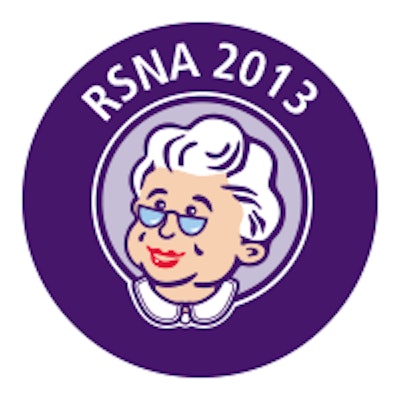
CHICAGO - Across the U.S., more than 50% of Medicare payments for diagnostic imaging services are made to nonradiologists, suggests new research presented on Tuesday at the RSNA annual meeting.
In fact, Medicare payments to nonradiologists for diagnostic imaging exceeds those to radiologists in 71% of states in the U.S., said Dr. David Rosman of Massachusetts General Hospital.
"If you ask the person on the street who is getting paid for diagnostic imaging, they'd probably say it's radiologists," Rosman said. "But although radiologists are traditionally considered the dominant providers of medical imaging, imaging services billed by nonradiologists are increasing -- and may actually outnumber those billed by radiologists."
Why does it matter? Because as payment methodologies evolve from traditional fee-for-service to various bundled and capitated models, an understanding of proportional spending on imaging attributable to radiologists versus nonradiologists becomes important for establishing a framework for these new models, he said.
Rosman and colleagues use a 5% random sample of approximately 32 million Medicare Part B beneficiaries in 2011 to calculate total spending on a state-by-state and U.S. Census Bureau regional basis for all Medicare-covered diagnostic imaging services. They also identified payments to radiologists separately from those to all other healthcare providers.
Mean national diagnostic imaging per beneficiary spending was $220.37, with an average $95.43 (43.3%) to radiologists and $124.95 (56.7%) to nonradiologists, the group found. The percentage of spending for nonradiologists ranged from a low of 35.5% in North Dakota to a high of 71% in South Carolina.
"The percentage of total [Medicare Physician Fee Schedule (MPFS)] payments for diagnostic imaging to nonradiologists exceeded those to radiologists in 71% of states and in every Census Bureau region," Rosman said.
10 lowest-paying states to radiologists
- South Carolina (29%)
- Alabama (32.1%)
- Georgia (33.2%)
- Texas (33.2%)
- Louisiana (33.5%)
- Oklahoma (36.9%)
- Mississippi (39%)
- Arkansas (39.3%)
- Florida (39.5%)
- Michigan (39.9%)
10 highest-paying states to radiologists
- North Dakota (64.5%)
- Minnesota (62.2%)
- Wisconsin (58.5%)
- Vermont (58.4%)
- Montana (57.9%)
- Maryland (55%)
- Washington (55%)
- Idaho (54.8%)
- New Hampshire (53.1%)
- Wyoming (53%)
Nationally, 56.7% of Medicare payments (with a range of 35.5% to 71% by state) for diagnostic imaging services are made to nonradiologists, Rosman's team found.
"Majority spending on nonradiologists could have significant implications in developing bundled and capitated payment models," he said. "This has implications for radiology nationwide, but also specifically within geographic regions where market effects are more extreme."
Variation by state
Rosman also presented related research that showed Medicare spending on medical imaging varies greatly between states.
Using the same data, the group found that mean diagnostic imaging per Medicare beneficiary spending was $197.08. Hawaii had the lowest rate, at $98.79, while New Jersey had the highest, at $368.83. Thirteen states had rates less than $150, while seven states had rates greater than $250. The mean state total Medicare imaging spending per beneficiary was $2,102.29.
"Medicare spending on medical imaging services per beneficiary varies almost fourfold between states," he said.
Regional variation in total healthcare and diagnostic imaging use is large, but that creates opportunities for improved utilization management, particularly in the context of emerging payment models, Rosman concluded.
"We need to know what percentage of imaging dollars are going to us, and not consider the country as homogenous," he said.




















